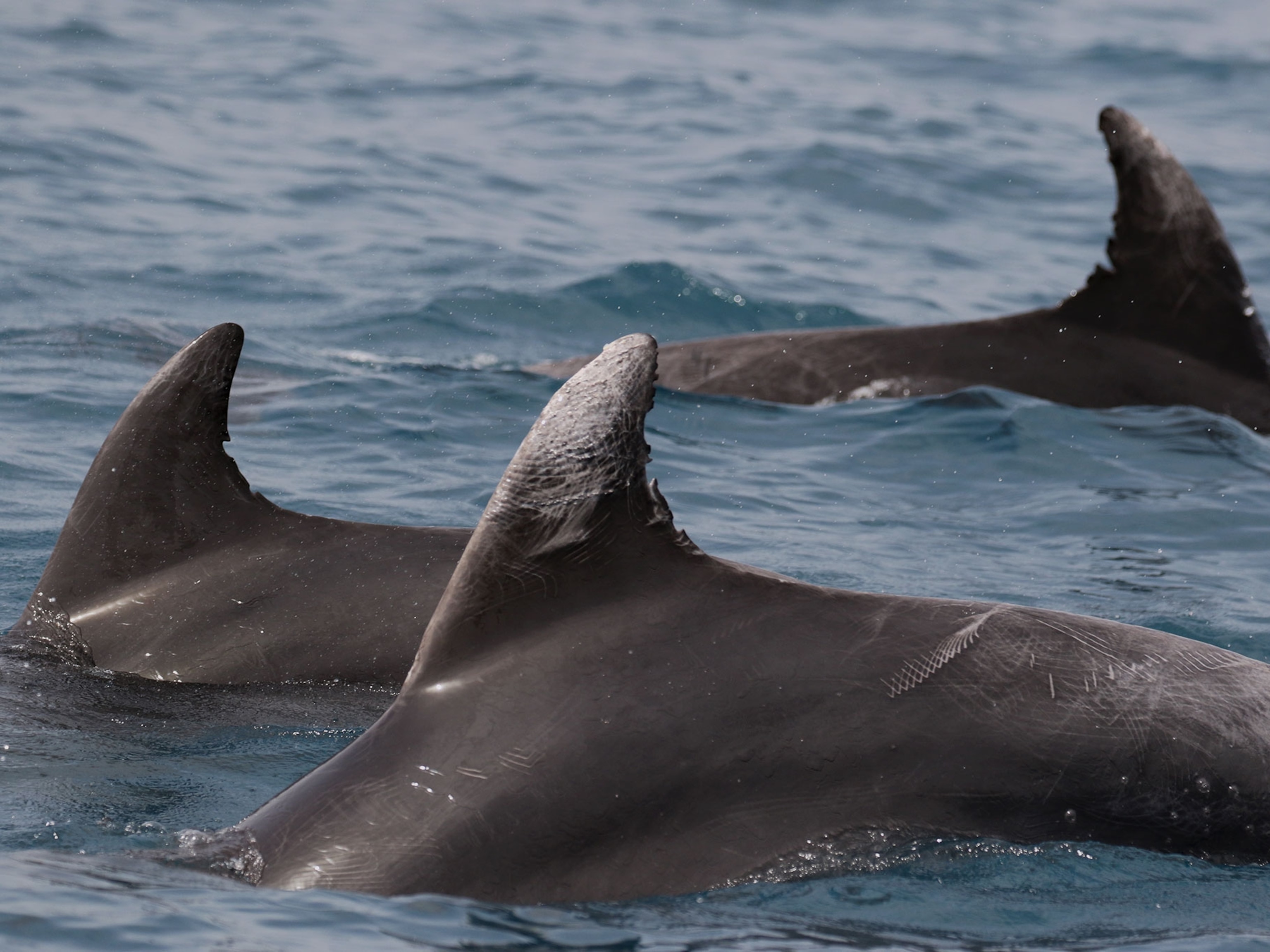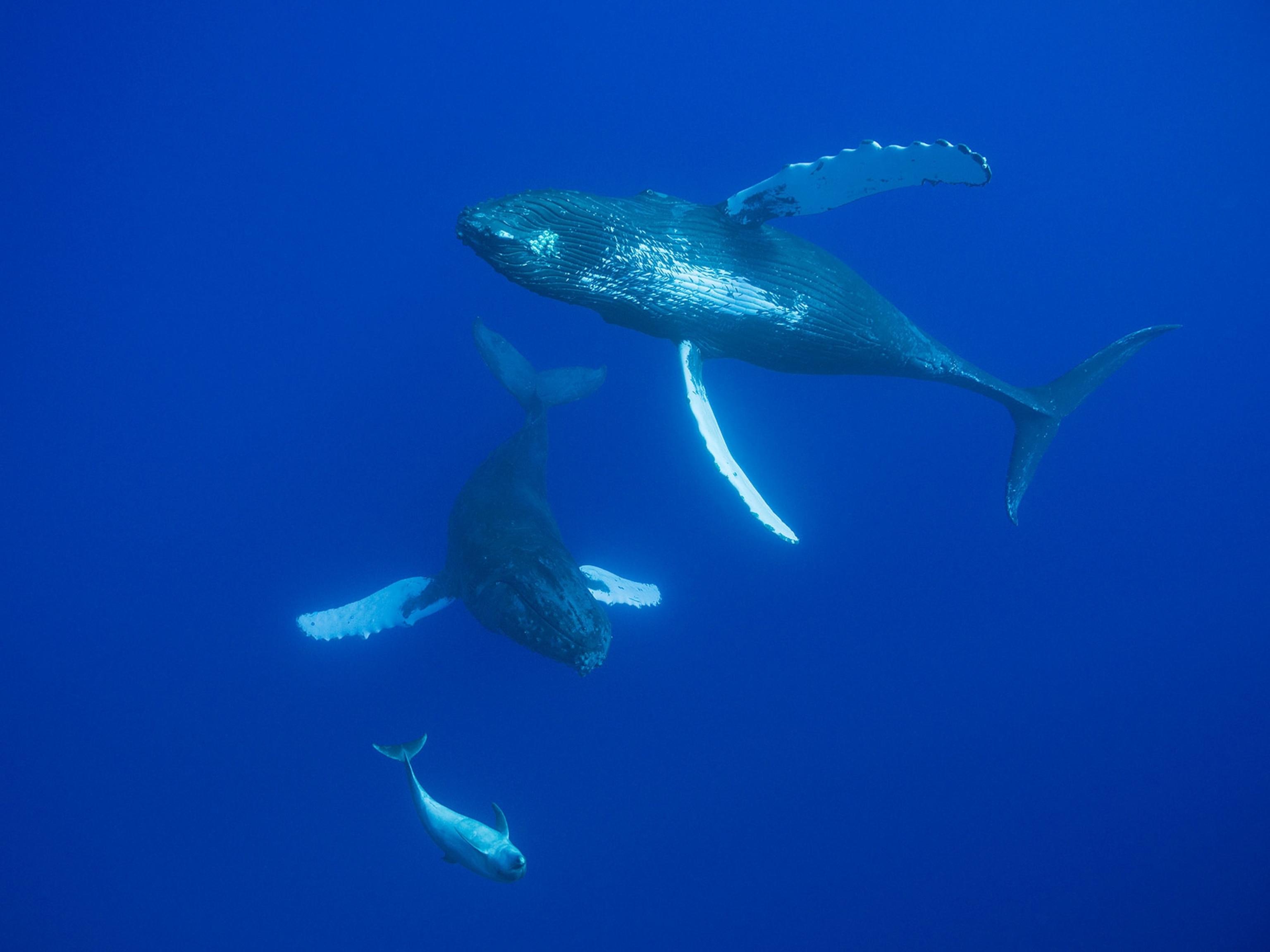
Why These Dolphins Behead Their Prey
The grisly behavior is exceptionally rare—and may be a cultural phenomenon.
The seventh season of Game of Thrones may have just premiered, but for catfish of the Gulf of Mexico, every day brings with it the grim possibility of ending up like Ned Stark: unexpectedly beheaded.
In a first, marine biologists have discovered that some of the Gulf’s common bottlenose dolphins have a knack for decapitating native marine catfish.
Though dolphins usually eat their prey whole, they sometimes get fancy in their meal preparation. Rough-toothed dolphins in the eastern Pacific “filet” mahi-mahi. Dolphins employ division of labor to corral and eat mullet. One 2009 study shows that Indo-Pacific bottlenose dolphins follow “recipes” for preparing cuttlefish meals.
But the Gulf dolphins’ behavior—which apparently allows them to avoid the catfish’s skull spines—seems to be exceptionally rare. It has taken decades, and a stroke of luck, to collect sufficient data for a formal research study.
“We just didn’t have enough behaviors until 2015, and even at this point, with only 13 sightings to report, it’s still pretty slim,” says Errol Ronje, a fisheries biologist on contract with NOAA's National Marine Fisheries Service. Ronje co-authored a study of catfish beheadings that published recently in PLoS ONE.
On May 7, 2015, Ronje and his colleagues were surveying dolphins off Mississippi’s Petit Bois Island when they encountered a bizarre sight: a half-kilometer trail of severed catfish heads bobbing in the wake of a dolphin pod.
The biologists quickly collected seven of the heads, which were so freshly decapitated that the eyes and pectoral fins were still moving. As the boat made its way back to land, the heads started vocalizing, making what Ronje describes as gurgling grunts. (He declined to imitate the sound.)
“The poor little catfish heads,” says Ronje. “Your heart goes out to them, but there’s really nothing you can do for them.”
Off With Their Heads
After weeks of cleaning the catfish skulls with flesh-eating beetles, Ronje studied the fish’s skull structure to gauge the beheadings’ precision. “It wasn’t a random tearing apart of the fish,” he says. “It was almost like [the dolphins] had cut off the posterior.”
Ronje notes that the dolphins have good reason to cut off the head. “Catfish have a pretty sophisticated defensive skull structure: They have three very sharp, serrated, rigid spines that are fitted into sockets … and they can lock and unlock this spine at will,” he says.
Not all Gulf dolphins are so clever. The researchers examined records of stranded dolphins and found 38 records of dolphins that had sustained injuries from catfish spines. One dead dolphin’s body contained 17 catfish spines, some of which had punctured its digestive tract. “He was in a bad way,” says Ronje.
Intriguingly, the few dolphins that know how to behead catfish may well know one another—implying that the behavior might be akin to a family recipe. In photographs taken at three severed-head sites in the Gulf of Mexico spanning more than 200 miles, Ronje and his colleagues saw the same eight dolphins. (See 10 intimate pictures of dolphins.)
“We talk about culture in marine mammals, and cultural transmission—learning techniques and passing them on,” says Stefanie Gazda, a biologist at the University of Massachusetts Boston and National Geographic grantee who studies dolphin feeding behavior. She was not involved with this study.
“To me, this [observation] is an indication of possibly some kind of cultural phenomenon.”
New Threat
Ronje, for one, wonders if uncovering this unique predator-prey relationship will bring new conservation attention to the catfish, which isn’t exactly beloved among recreational fishers but may be vital prey for the dolphins observed eating them.
“We’ve shown that there’s at least a subpopulation of a protected species that [preys on] catfish,” he says. “Maybe one day, this could lead to future studies of catfish abundance.”
Gazda cautions that research on the Gulf of Mexico’s marine mammals, including common bottlenose dolphins, must grapple with a newly resurgent threat: budget cuts.
The Trump Administration’s 2018 budget would eliminate the U.S. Marine Mammal Commission, which provides science-based oversight of federal activities affecting marine mammals. The program cost $3.43 million in 2017, or roughly one penny per American.
“There [are] these offshore marine mammal populations that we just don’t know anything about,” says Gazda.
“And then [when] you have a major ecological disaster like the Gulf of Mexico oil spill, you’re sitting with your hands tied.”





